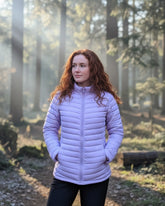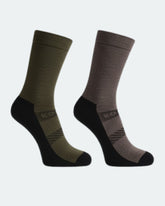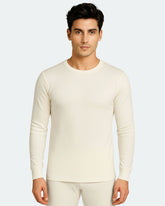Stay Warm And Stylish: Your Wardrobe Guide For Winter In China
Want to enjoy the winter in China? Do not miss the Ice and Snow Festival in Harbin. Harbin located in the northeastern part of China, has earned its reputation as a unique winter destination primarily because of its world-famous Ice and Snow Festival. This annual event, which usually runs from late December to early February, transforms Harbin into a winter wonderland of monumental ice sculptures, intricate snow carvings, and dazzling ice lantern displays.
Harbin’s festival boasts some of the largest and most impressive ice sculptures in the world. Skilled artisans create intricate structures, including castles, temples, and even life-sized buildings entirely from ice. One of the highlights of the festival is the Ice Lantern Art Fair. Artists use ice blocks to create intricate lanterns and sculptures. Harbin also hosts a Siberian Tiger Park, where visitors can observe these magnificent creatures in their snowy habitat, further enhancing the winter experience.
Harbin’s Ice and Snow Festival is a unique winter destination that captures the imagination and invites visitors to embrace the magic of winter. With its extraordinary ice and snow artistry, diverse activities, and cultural experiences, it’s no wonder that Harbin has become a globally renowned winter destination for travelers seeking a truly unforgettable winter adventure. Average temperature in Harbin, China
Harbin’s Winter Climate: Understanding the Cold
Harbin’s winter weather is characterized by bitterly cold temperatures. The city is known for its long and harsh winter season, which typically begins in November and can last until March. During the coldest months of December and January, temperatures regularly plummet well below freezing. Daily highs in December and January often range from -10°C to -20°C (14°F to -4°F), while nighttime lows can drop even further, reaching as low as -30°C (-22°F) or colder on occasion.
Harbin receives a significant amount of snowfall during the winter months. Snow typically starts falling in November and continues throughout the season. The city’s landscape is blanketed in a thick layer of snow, which sets the stage for the stunning ice and snow sculptures of the Ice and Snow Festival. The accumulation of snow can vary, but it’s not uncommon for Harbin to receive around 30 centimeters (12 inches) or more of snow in a typical winter.
Harbin’s winter weather conditions are incredibly cold, with temperatures frequently well below freezing and substantial snowfall. It’s a destination for those who appreciate the beauty of winter and are prepared to bundle up to enjoy the unique cultural and outdoor experiences that this cold climate offers, including the spectacular Ice and Snow Festival. Ice festival in Harbin, China
Layering Essentials: Building a Solid Foundation
Layering is a fundamental concept in staying warm and comfortable during the winter in China, especially when transitioning between indoor and outdoor environments. It involves wearing multiple layers of clothing that can be easily added or removed to regulate your body temperature as you move between different temperature zones.
Base Layer:
- The base layer is the closest to your skin. It’s designed to wick moisture away from your body, keeping you dry. Choose moisture-wicking materials like merino wool or synthetic fabrics.
- Base layers should fit snugly but not be overly tight, as they need to trap a layer of warm air close to your skin.
Insulating Layer(s):
- Insulating layers are responsible for trapping heat and keeping you warm. They can be made of materials like fleece, down, or synthetic insulation.
- You can have multiple insulating layers, depending on the severity of the cold. Thicker layers provide more warmth.
- These layers should be breathable to allow moisture to escape while retaining heat.
Outer Layer (Shell):
- The outer layer, also known as the shell layer, protects you from wind, rain, and snow. It should be windproof and waterproof or water-resistant if you expect wet conditions.
- Look for breathable materials in your outer layer to prevent overheating and moisture buildup.
Now, let’s explore how layering helps you adapt to changing indoor and outdoor temperatures in winter in China:
When you’re indoors in a heated environment and plan to step outside into the cold winter air, layering allows you to adjust your clothing quickly and efficiently.
- Start Indoors: When indoors, you may only need your base layer and perhaps a light insulating layer to stay comfortable. Remove any extra layers to prevent overheating.
- Transition: As you prepare to go outside, add insulating layers as needed. This might involve putting on a fleece or down jacket, adding gloves, a hat, and a scarf.
- Outdoor Comfort: Once outside, the layers will trap warmth, and the outer layer will protect you from wind and moisture. You can fine-tune your comfort by zipping or unzipping your outer layer or adjusting your insulating layers as needed. Base Layer for winter in China
Base Layer: Wicking Away the Chill
Moisture-wicking and insulating are two key features of base layers that work together to keep the body dry and warm during winter in China. These features are crucial for maintaining comfort and preventing cold-related issues like hypothermia.
Moisture-wicking refers to a fabric’s ability to pull moisture (sweat) away from your skin and distribute it to the outer surface of the fabric, where it can evaporate more easily. In winter, when you’re active or wearing multiple layers, your body can still sweat, which can lead to discomfort and coldness when the moisture stays next to your skin.
Insulating base layers are designed to trap heat close to your body and provide a barrier against the cold air outside. When selecting base layers for winter in China, consider the balance between moisture-wicking and insulating properties based on your planned activities and the specific climate you’ll be facing. Layering with moisture-wicking base layers close to your skin and insulating layers on top will help you maintain the ideal balance of warmth and dryness throughout the winter season.
Materials for Base Layer
Choosing the right material for your base layers is essential for staying warm, comfortable, and dry during winter in China. Two common types of materials for base layers are merino wool and synthetic blends.
Merino wool
Merino wool is an excellent natural insulator. It has tiny air pockets within the fibers that trap heat close to your body, providing effective warmth without excessive bulk. It is also known for its exceptional moisture-wicking properties. It can absorb up to 30% of its weight in moisture while still feeling dry to the touch. This helps keep sweat away from your skin and prevents you from feeling clammy.
Merino wool has the unique ability to regulate body temperature. It can keep you warm in cold conditions and cool in hot conditions, making it versatile for varying weather. The material is soft, non-itchy, and comfortable against the skin. It doesn’t cause irritation or chafing. Merino wool is a renewable and biodegradable resource, making it an eco-friendly choice for those concerned about sustainability.
Synthetic Blends
Synthetic base layers are often more budget-friendly than merino wool options, making them accessible to a wider range of consumers. Many synthetic blends are designed with moisture-wicking properties, effectively moving sweat away from your skin.
Synthetic materials tend to dry faster than merino wool, which can be an advantage during high-intensity activities or in wet conditions. Synthetic blends are generally more abrasion-resistant and can withstand wear and tear better than merino wool. Mid layer for winter
Mid Layer: Trapping Heat
When it comes to staying warm in cold winters without adding bulkiness, you’ll want to focus on choosing mid-layer clothing that offers effective insulation while maintaining a slim profile. Here are some options to consider:
-
Fleece Jackets:
Fleece is a lightweight and warm material that provides good insulation. For cozy comfort and street-smart winter fashion, Kosha’s Pullover Hoodie Sweatshirts For Women provide the perfect mid-layer for sightseeing or studying in Chinese cities. It’s breathable and can be worn comfortably as a mid-layer. Look for options with a slim fit to avoid bulkiness. -
Down or Synthetic Insulated Jackets:
Down jackets are incredibly warm for their weight, and they compress well. Look for lightweight down jackets with a slim cut. Synthetic insulated jackets, like those filled with PrimaLoft, are also warm and lightweight. -
Thin Insulated Vests:
Insulated vests provide core warmth without adding bulk to your arms. They are perfect for layering over a thin base layer and under a shell jacket. -
Merino Wool Sweaters:
Merino wool is known for its insulating properties while remaining relatively thin. A merino wool sweater can be a great mid-layer, as it’s breathable and moisture-wicking. For stylish warmth without bulk, explore Kosha’s Merino Wool V-Neck Pullover For Men – perfect for layering and made with soft, skin-friendly fabric that performs even in sub-zero climates.
Remember to pay attention to the material, fit, and overall layering strategy. It’s often more effective to wear multiple thin layers that trap warm air between them rather than a single bulky layer. Layering effectively is key to staying warm without feeling bulky during winters in China or any other cold region. Outer layer for winter in China
Outer Layer: Defending Against Harsh Elements
Having a waterproof and windproof outer layer is crucial for staying comfortable and safe during winters in China, especially in regions prone to heavy snowfall and strong winds.
-
Protection from Snow and Rain:
Snow and rain can quickly soak through regular clothing, leading to discomfort and even hypothermia in extremely cold conditions. A waterproof outer layer prevents moisture from penetrating, keeping you dry and warm. -
Wind Chill Factor:
Wind can significantly lower the effective temperature, making it feel much colder than it actually is. A windproof outer layer acts as a barrier, reducing the impact of wind chill and helping to maintain a comfortable body temperature. -
Thermal Efficiency:
Wet clothing loses heat much faster than dry clothing. When moisture seeps in, it can compromise your body’s ability to retain heat. A waterproof and windproof shell helps maintain the insulating properties of your inner layers. For women, the Waterproof Fleece Lined Jacket For Women by Kosha offers premium warmth, breathability, and a feminine fit—ideal for snowy destinations like Harbin. -
Versatility:
A high-quality waterproof and windproof outer layer can serve as a versatile piece of gear. It can be worn over your other layers in various weather conditions, from light rain to heavy snowfall, providing you with a reliable shield against the elements. -
Protection for Electronics and Gear:
In today’s world, we often carry electronic devices like smartphones, cameras, or GPS devices. A waterproof layer helps protect these valuable items from moisture damage.
When selecting a waterproof and windproof outer layer, make sure to choose one with a breathable membrane to prevent excessive moisture buildup inside. Look for features like sealed seams, adjustable hoods, and pit zips for ventilation to enhance comfort and functionality. Investing in a high-quality outer layer is an essential part of your winter clothing system for protection and enjoyment in cold, snowy, and windy conditions in China or any other winter destination. Pants for winter in China
Importance of High-quality winter jackets and pants
Wearing high-quality winter jackets and pants for winters in China, or any cold region, is essential for several important reasons:
-
Protection from Harsh Weather Conditions:
China experiences a wide range of winter weather conditions, from freezing temperatures and heavy snowfall in the north to milder but still chilly weather in the south. High-quality winter clothing is designed to withstand these conditions, providing insulation, waterproofing, and wind-proofing to keep you warm and dry. Opt for Waterproof Ski Pant For Men from Kosha – engineered to keep your legs warm and dry during skiing, hiking, or even long city walks in snowy Harbin. -
Safety:
Extreme cold can lead to serious health risks, such as hypothermia and frostbite. High-quality winter gear helps you maintain a comfortable body temperature and reduces the risk of cold-related illnesses and injuries. -
Comfort:
Quality winter clothing is designed for comfort. It often includes features like adjustable hoods, ventilation options, and ergonomic designs that enhance your overall comfort while braving the cold. -
Durability:
High-quality winter jackets and pants are constructed with durable materials and craftsmanship. They are designed to withstand the rigors of winter activities and last for many seasons, saving you money in the long run. -
Versatility:
Many high-quality winter jackets and pants are versatile, suitable for a range of outdoor activities, from skiing and snowboarding to hiking and everyday wear. This versatility means you can invest in a few key pieces that serve multiple purposes.
Footwear: Keeping Feet Toasty
Proper winter boots with insulation and good traction are of paramount significance when navigating the winter conditions in China for several reasons:
-
Protection from Cold:
Winter in China can bring extremely cold temperatures, especially in northern regions. Insulated boots help to keep your feet warm by trapping heat and preventing cold air from seeping in. This is crucial for maintaining comfort and preventing cold-related illnesses like frostbite. -
Comfort and Well-Being:
Cold and wet feet can be uncomfortable and potentially lead to discomfort and even health issues. Proper insulation in winter boots keeps your feet warm and comfortable, allowing you to enjoy outdoor activities and go about your daily routine without discomfort or pain. -
Safety:
Snow and ice are common in many parts of China during the winter months. Boots with good traction reduce the risk of slipping and falling on icy or slippery surfaces, helping to prevent injuries. -
Waterproofing:
In addition to insulation, many winter boots come with waterproofing features, such as Gore-Tex membranes or sealed seams. This ensures your feet stay dry even in wet conditions, preventing discomfort and the risk of frostbite. -
Warmth Regulation:
Properly insulated winter boots provide warmth without causing your feet to overheat. They allow your feet to breathe and regulate temperature, preventing excessive sweating that can lead to moisture buildup and discomfort. -
Improved Mobility:
Quality winter boots offer proper arch support and cushioning, allowing for comfortable and stable movement. This is particularly important when navigating snowy or icy terrain.
Beanies for winter in China
Accessories for Full Protection
Accessories like gloves, hats, scarves, and beanies are incredibly important during the winter months for several reasons:
-
Warmth:
These accessories help retain heat in key areas of your body, namely your head, neck, and hands, which are more vulnerable to cold temperatures. Keeping these areas warm is essential for overall comfort and health in cold weather. -
Preventing Heat Loss:
The human body loses a significant amount of heat through the head, so wearing a hat or beanie helps to reduce heat loss and maintain a comfortable body temperature. -
Frostbite Prevention:
In extremely cold conditions, frostbite can occur when skin and extremities are exposed to freezing temperatures. Gloves and scarves provide a barrier between your skin and the cold, reducing the risk of frostbite on your hands and neck. -
Wind Protection:
Accessories like scarves and beanies also provide a layer of protection against the biting winter wind. Wind can significantly lower the effective temperature, so blocking it helps maintain warmth and comfort. -
Moisture Management:
Scarves can absorb sweat and moisture, keeping your neck dry. Wet skin loses heat much faster than dry skin, so moisture management is crucial for staying warm. -
Comfort:
Cold hands and ears can be uncomfortable and distracting. Gloves, beanies, and hats keep these areas warm, allowing you to stay focused and enjoy outdoor activities. -
Versatility:
Winter accessories are versatile and can be worn in various ways. Scarves can double as face masks in extremely cold or windy conditions, and beanies can be worn pulled down over your ears for added warmth. -
Style:
While functionality is paramount, winter accessories also offer an opportunity to express your personal style and add a touch of fashion to your winter wardrobe. -
Safety:
When it’s cold, your body may divert blood flow away from your extremities to maintain core temperature. This can affect your dexterity and grip. Wearing warm gloves or mittens helps maintain hand functionality and safety when handling objects. Stylish ways to dress in Winter
Staying Stylish: Combining Fashion with Function
Achieving a stylish winter look while prioritizing warmth requires careful selection of clothing and accessories that blend fashion with function. Here are some tips to help you create a stylish and warm winter outfit:
1. Start with a Warm Base Layer:
- Begin with thermal or moisture-wicking base layers to trap heat and keep you warm without adding bulk. Look for options made of materials like merino wool or synthetic fabrics.
2. Choose a Stylish Coat:
- Invest in a high-quality winter coat that suits your style. Options like wool pea coats, puffer jackets, or tailored wool overcoats can be both stylish and warm. Ensure it has proper insulation and is designed to withstand cold temperatures.
3. Layer Effectively:
- Layering is key to staying warm without sacrificing style. Add a mid-layer like a thin down jacket or a fleece sweater for extra insulation. Mix and match textures and colors to create visual interest.
4. Opt for Stylish Accessories:
- Accessories like scarves, gloves, hats, and beanies are not just functional; they can also enhance your look. Choose them in complementary colors or patterns that match your outfit.
5. Prioritize Insulated Footwear:
- Warm boots are essential for winter. Look for stylish yet insulated options, such as leather boots with a warm lining. Consider adding stylish boot cuffs or leg warmers for extra warmth and flair.
6. Select Fashionable Winter Pants:
- Opt for stylish yet warm pants, such as wool trousers or slim-fit insulated jeans. Consider thermal or fleece-lined leggings to wear under your pants for extra warmth.
7. Play with Textures and Patterns:
- Mix different textures and patterns in your outfit to add visual depth. For example, pair a chunky knit sweater with sleek leather boots or a plaid scarf with a solid-colored coat.
8. Accessorize Thoughtfully:
- Choose winter accessories like gloves and scarves that complement your outfit. Leather or suede gloves, for instance, can add a touch of elegance. Accessorizing for winter in China
9. Add a Statement Coat or Jacket:
- Consider having one standout coat or jacket that becomes the focal point of your winter look. A bold color, unique pattern, or stylish detailing can make a statement while keeping you warm.
FAQs
Here are some frequently asked questions (FAQs) that might be helpful for a guide on how to dress in winter in China.
1. What is the winter weather like in China?
Winter weather in China varies significantly by region. In the northern parts, like Beijing and Harbin, winters are cold and dry, with temperatures often dropping below freezing. In the south, including cities like Shanghai and Guangzhou, winters are milder but can still be chilly and damp.
2. What kind of coat or jacket should I wear in China’s winters?
The type of coat or jacket you need depends on the temperature and your activities. For extremely cold weather, consider a down parka or a well-insulated coat. In milder conditions, a wool coat or a versatile 3-in-1 jacket may suffice.
3. Can I wear fashion-forward clothing in winter, or should I prioritize warmth over style?
You can prioritize both warmth and style. Look for stylish winter clothing options, such as wool coats, fashionable boots, and designer scarves, that also provide insulation and protection from the cold.
4. How can I stay stylish while dressing warmly for China’s winters?
You can achieve a stylish look by investing in quality winter pieces, mixing textures and patterns, accessorizing thoughtfully, and paying attention to fit and coordination. Confidence in your outfit can make a big difference.
5. What should I wear for outdoor activities like hiking or skiing in China’s winter?
For outdoor activities, opt for specialized gear designed for cold weather, such as thermal base layers, insulated waterproof jackets and pants, and sturdy insulated boots. Layering is important to regulate body temperature. Harbin Opera house
Conclusion
In conclusion, dressing for winter in China requires careful consideration of the diverse climate and weather conditions across this vast nation. Whether you’re exploring the chilly northern regions or experiencing milder winters in the south, the key is to prioritize both warmth and style. Regardless of the region, layering is your best friend. Start with thermal or moisture-wicking base layers, add insulation with mid-layers, and top it off with a warm and weatherproof outer layer.
Select a coat or jacket that suits the temperature and your activities. In extremely cold regions, opt for well-insulated parkas or down jackets. In milder areas, a wool coat or a versatile 3-in-1 jacket can be sufficient. If you plan on outdoor activities like hiking or skiing, invest in specialized gear designed for cold weather, including thermal base layers, insulated waterproof jackets and pants, and sturdy boots.
If you want winter clothing for winter in China, you might want to check out the Kosha store or their website.
Remember that dressing for winter in China is not just about staying warm; it’s also an opportunity to express your personal style and adapt to the unique cultural and climatic characteristics of this diverse country. By combining fashion with function, you can enjoy your winter adventures in China in comfort and style.
This post is written by a Kosha member – Neeti Kapoor.
Editor’s Picks
Alaskan Parka Jacket For Women - Slim Fit
- ₹8,925.00
₹11,900.00- ₹8,925.00
- Unit price
- / per
Lightweight Packable Puffer Jacket For Women
- ₹5,040.00
₹8,400.00- ₹5,040.00
- Unit price
- / per
Alaskan Parka Plus Size Jacket For Women
- From ₹10,125.00
₹13,500.00- From ₹10,125.00
- Unit price
- / per
Woolmark Full Sleeves High Neck Thermal Top For Women
- From ₹1,845.00
₹1,845.00- From ₹1,845.00
- Unit price
- / per
Men's Pack Of 2 Merino Wool Cushioned Technical Socks
- ₹2,148.00
₹3,580.00- ₹2,148.00
- Unit price
- / per















